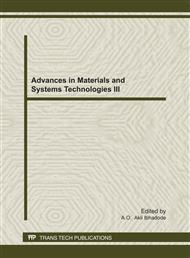p.359
p.367
p.375
p.385
p.393
p.403
p.413
p.421
p.431
Rheological Characterisation of Heavy Oil and Impact on its Production Enhancement
Abstract:
Criticality of rheology for heavy oil recovery is the main purpose of this paper supported by different results. The Bingham Plastic, Power Law and Herschel Bulkley rheological models have been adopted for the purpose of this paper. Rheological characterisation was carried out for different temperatures. Rheological behaviour of non-Newtonian heavy oil for different shear rates is analysed in this paper. Effective shear and bulk viscosities for different flow rates are compared for all rheological models. Using the horizontal well productivity model, the drawdown values for all rheological models are determined. Similarly for the sand management purpose the critical rates of Newtonian and these three non-Newtonian fluids are plotted to determine the critical drawdown values for each type of fluid. Impact of drainage profile on the effective viscosities is also compared for different drainage profiles. Shear rate models are proposed in this paper for Bingham Plastic, Power Law and Herschel Bulkley rheological models. The new Micro-PVT equipment is also introduced for determining the PVT properties and rheological behaviour of heavy oil. Nomenclature
Info:
Periodical:
Pages:
393-401
Citation:
Online since:
October 2011
Authors:
Price:
Сopyright:
© 2012 Trans Tech Publications Ltd. All Rights Reserved
Share:
Citation:


